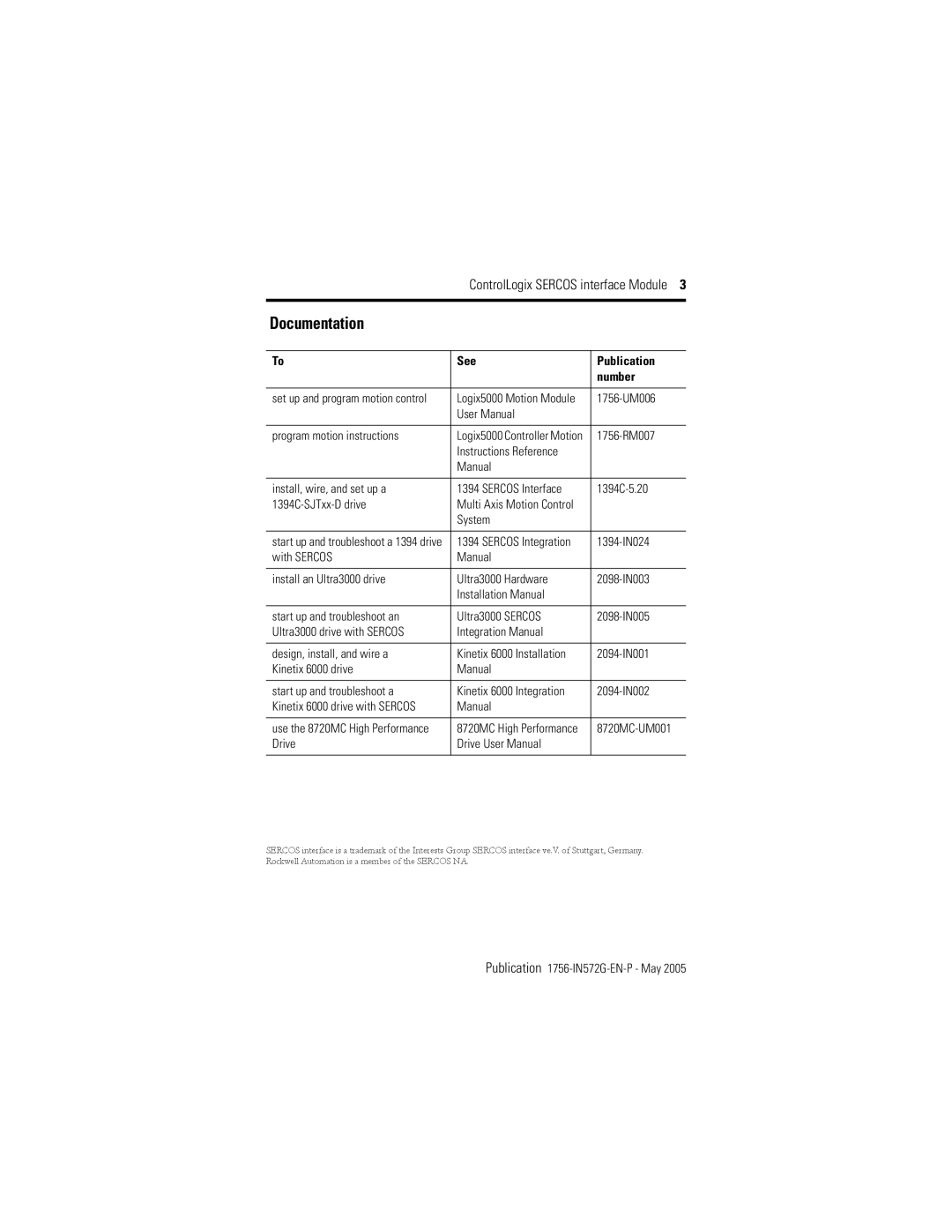1756-M03SE, 1756-M08SE specifications
Rockwell Tools has a strong reputation in the field of industrial automation, and their 1756-M08SE and 1756-M03SE offerings are exemplary of the brand's commitment to quality and innovation. These modular components are part of Rockwell Automation’s ControlLogix platform, designed to streamline manufacturing processes and enhance operational efficiency.The 1756-M08SE is an 8-axis motion control module that provides highly advanced capabilities for managing complex applications in various industries, including automotive, packaging, and material handling. This module enables precise coordinated control of up to eight servo or stepper axes. One of its standout features is its ability to handle synchronized motion, allowing for smooth motion transitions with minimal vibration—ensuring better product quality during production.
The 1756-M03SE, on the other hand, is a 3-axis servo drive module that focuses on providing high-performance motion systems. With built-in safety features and support for multiple communication protocols, it ensures not only operational efficiency but also worker safety. Its compact design enables easy integration into existing control systems while maximizing space within control cabinets.
Both modules are equipped with advanced technologies that enhance processing capabilities and diagnostic functions. The support for Integrated Motion on EtherNet/IP allows for seamless communication between devices, simplifying the setup and programming processes. Diagnostic tools enable users to monitor system performance in real-time, effectively minimizing downtime and expediting troubleshooting.
In terms of characteristics, both modules support a wide variety of input and output configurations, making them suitable for a diverse range of applications. They are built to withstand harsh industrial environments, featuring robust housing that protects against dust, moisture, and extreme temperatures. Their user-friendly interfaces allow for easy programming and configuration, providing operators with straightforward access to control parameters.
In conclusion, the Rockwell Tools 1756-M08SE and 1756-M03SE are exemplary modular components that offer cutting-edge motion control solutions. Their combination of advanced features, powerful technologies, and durable design makes them ideal choices for organizations looking to enhance automation and efficiency within their manufacturing processes. Organizations investing in these modules can expect improved operational performance and greater flexibility in their automation strategies.
